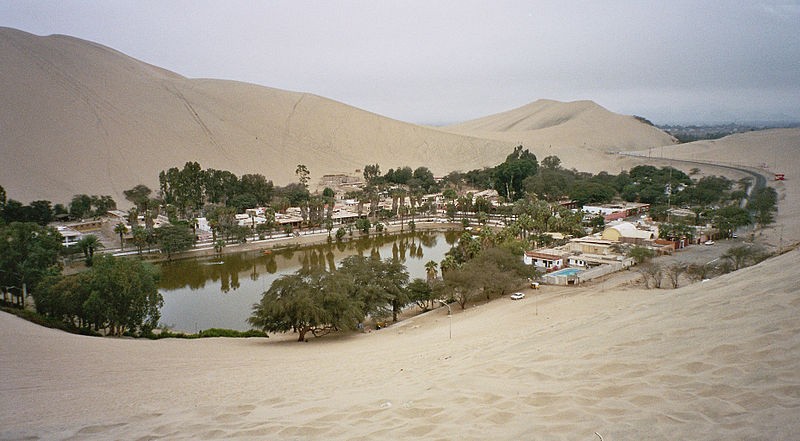Last May, astronauts aboard the International Space Station (ISS) were 250 miles (400 kilometers) above Earth when they spotted a heart-shaped oasis in the Egyptian desert.
On the 14th of February, NASA's Earth Observatory website released the stunning image as a special Valentine's Day gift to the entire planet.

According to Space.com, it's size is comparable to about one-half of the total land area of New York City's five boroughs. Faiyum Oasis, a vast heart-shaped oasis that stretches over 450 square miles or 1,200 square kilometers, was discovered to be the source of the massive heart form observed from space.
A vast wetland basin covering an area larger than the five boroughs of New York City, the Faiyum Oasis is a verdant oasis in the middle of the desert known as the Faiyum Oasis, according to Live Science.
According to NASA, the oasis has supported human life for almost 8,000 years and was used as a testing ground for some of the most ambitious engineering projects of the ancient world.
Also Read : Antarctic Lake: Key to Oxygen's Past
Flooding Contributed to the Existence of Lake Moeris
The Bahr Yussef, a neighboring natural tributary of the Nile River, feeds the oasis, which was formerly known as Lake Moeris. Seasonal floods from the Nile were critical to the lake's existence, according to the geography department at University College London (UCL).
It wasn't uncommon for ancient Egyptian leaders to take drastic action when Nile flood water levels dropped dangerously low. Pharaohs in the distant past, some dating back 4,000 years, may have dealt with a severe water shortage by expanding the Bahr Yussef and pumping water back into the area, as per Tech Times.
Egypt's Heart-Shaped Oasis was one of the world's first major national hydrological projects, according to the University of California, Los Angeles website. The engineering rulers of the 12th Dynasty were Amenemhat I-III, according to the inscription.
Qarun Lake, a much smaller version of the ancient lake, still exists today, as visible in NASA's image (below the heart). Old Moeris' wide lakebed is still a fruitful oasis because of those ancient architectural feats, and you can see the patchy gray areas that make up the oasis's heart in the image above, along with many villages, cities, farms, and orchards.
How was the Heart-shaped Oasis Captured?
Photograph ISS065-E-66742 was taken by an astronaut on the International Space Station on May 25, 2021, with a Nikon D5 digital camera with a 100 millimeter focal length. The Earth Science and Remote Sensing Unit at Johnson Space Center and the ISS Crew Earth Observation Facility provide this service.
A member of the Expedition 65 team captured this shot. All lens artifacts have been eliminated from the image, and the contrast has been improved.
The ISS National Lab is supported by the International Space Station Program to enable astronauts to take images of Earth that will be of maximum value to scientists and the general public, and to make those images freely available on the Internet.
The NASA/JSC Gateway to Astronaut Photography of Earth has additional photographs taken by astronauts and cosmonauts. GeoControl Systems, JETS Contract at NASA-JSC, provided the caption.
Related Article : Tourists Flocked to Witness This Amazing Desert Oasis in Peru
For more news, updates about oasis and similar topics don't forget to follow Nature World News!
© 2025 NatureWorldNews.com All rights reserved. Do not reproduce without permission.





